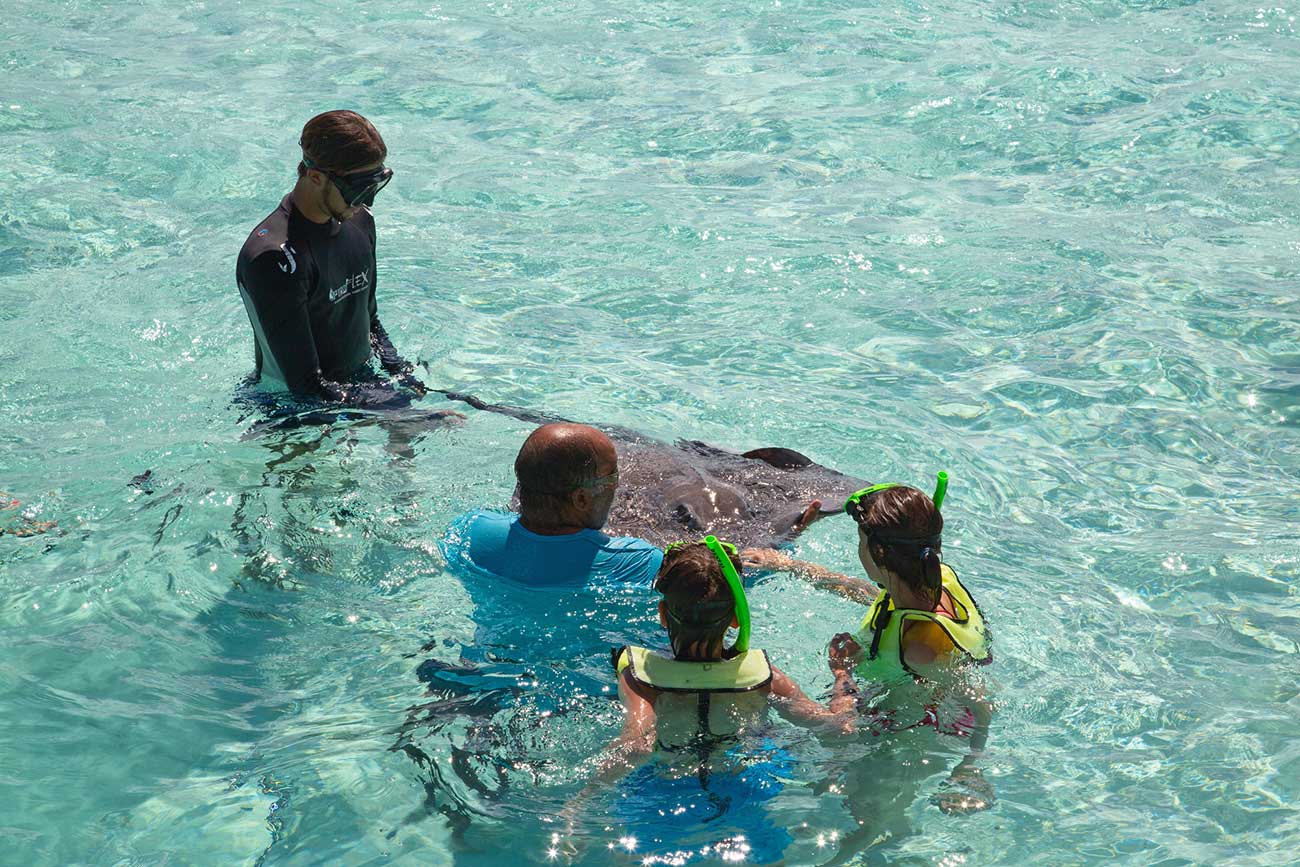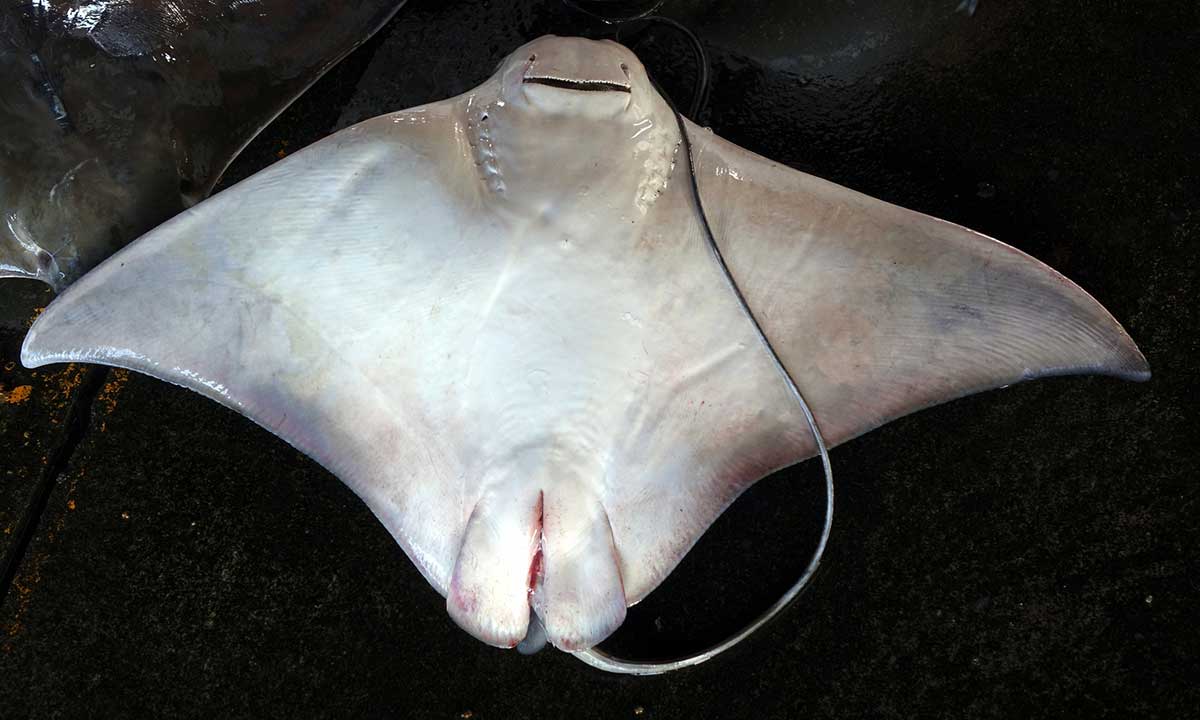Thousands of people are reported to be stung by stingrays each year in the United States alone (5000, to be exact!), and such injuries range from small wounds to severe lacerations and even (rarely) lead to deaths. Most incidents occur due to ignorance or carelessness, so we would like to provide our readers with some useful information on stingray injuries in an easy to read format. Forewarned is forearmed!
General Information
Stingrays inhabit coastal marine waters in tropical and subtropical areas throughout the world. Contrary to common belief, these animals do not usually attack people and try to avoid being stepped on whenever possible. If that does not sound convincing to you, check out the place named Stingray City in the North Sound of Grand Cayman in the Caribbean Sea, where tourists feed and swim with uncaptured stingrays fearlessly. Local tour guides can even lure these animals to the surface with a piece of squid and encourage vacationers to stroke them. While we certainly do not recommend such close relationships with stingrays, it is a curious fact that those friendly creatures are the same species that are found in the Gulf of Mexico, where people fall victim to stingray injuries on a regular basis.

Source: Depositphotos
Well, stingrays are not aggressive species but, like any living things, they try to protect themselves in dangerous situations. After all, nobody likes being stepped on. Sometimes you can easily see stingrays congregating along the sandy sea bottom, but in many cases, they lie buried in the sand in shallow or muddy areas of water and are difficult to notice. This is why these animals are sometimes called aquatic landmines. If a diver, fisher, or swimmer does not exercise extreme caution, they can sustain a life-threatening injury and experience the worst pain in their life after putting their foot down on a stingray, lying at the bottom. The size of a stingray and its stinger depends on the stingray species – many of them grow up to several feet across and still can easily hide in the sand.
Prevention
Probably, the best way to prevent a stingray sting is to develop a habit to shuffle along instead of lifting your feet and stepping down in shallow areas. If you have an oar or a long stick, you can gently slide it along the sandy ground in front of you to check the bottom for stingrays. Wearing footwear can give additional protection. Nevertheless, most types of footwear cannot eliminate the possibility of injuries. Many stings are in the ankle or top of the foot. Clothing hardly provides any protection, since stingray stingers (spines) can penetrate neoprene, leather, and rubber.
Injury
Stingrays have spines, or stingers, which they use to penetrate and envenom the enemy’s body, so there are two aspects in any stingray injury: the penetrating wound and the venom.

Source: Depositphotos
Never underestimate the penetrating ability of a stingray’s barb, even on the smallest of stingrays. The stingray’s barb is designed to penetrate virtually all sorts of dense materials, including wood and leather. And as unbelievable as it may seem, it’s been documented that large stingrays are able to drive a barb through a boat’s wooden planks or completely through a persons arm or leg.
Jerry Labella
1. Wound
Stingray wounds vary from uncomplicated puncture wounds to major lacerations. The bone-hard spine resembles the incredibly sharp serrated blade of a knife, has a pointed end, and can be up to 14 inches long.
When you step on a stingray, the fish throws its tail with a stinger forward and side-to-side, which often causes injury in the lower leg or in the top of the foot.
If the sting penetrates abdomen or chest and injures the vital organs, it can lead to more severe consequences and even death. Quite often, the stinger or its parts stay imbedded in the wound and cause persistent infection if you do not remove them.
2. Envenomation
The stinger is covered with a sheath, which discharges venom when broken (then the animal regenerates it in the same way as we regenerate our fingernails). The stingray venom consists of a heat-labile (degraded by heating) protein. Unfortunately, no antivenom exists.
Be aware that 70 percent of stingray victims go unconscious as a result of envenomation.
Symptoms
Envenomation immediately causes pain around the injury, which feels very intense, peaks at 30-60 minutes, and lasts up to 48 hours.
The pain is often relentless and inconceivable and it can be shocking even to witness it.
At first, the wound looks blue or dusky and then its color may change to bright red. Stingray wounds usually swell and bleed. Venom often causes weakness, headache, dizziness, anxiety, sweating, nausea, diarrhea, fainting, and muscle cramps. Envenomation can also result in tissue death (necrosis) and infection.
Treatment
If you or another person are injured by a stingray, you should promptly seek expert medical help. Nevertheless, there are actions you can take to provide first aid in the meanwhile.
Deep wounds, as well as abdomen and chest, injuries require immediate hospitalization!
Irrespective of the stingray species, first aid is always the same and consists in the following steps:
1. Irrigate the wound with water to remove the venom. The water should be fresh and clean – ideally, sterile. Tap water is still an option. As for saltwater, it contains bacteria, so it is the last resort in treating stingray injuries. Contrary to popular belief, urine and vinegar are not effective.
2. Remove the foreign material (pieces of the stinger, sheath, etc.) to prevent complicating infections. First, extract the most obvious material. Then you can meticulously remove the remains when you immerse the wound in hot water.
3. Immerse the injured area in hot water for 30-90 minutes to decrease the pain. The temperature should be as high as the person can tolerate, but less than 115 °F in order not to cause burns. Change the water frequently to keep the temperature high. While the injured area is in the water, remove the remaining foreign material. If you have no access to hot water, you can use a hot compress or even hot sand (but then irrigate the wound thoroughly to remove the sand). In any case, do not omit this step, because it helps to decrease the pain significantly.
If pain returns, repeat the hot-water soaking.
4. Use oral pain medications to relieve the pain. If you have proper training, you can infiltrate the area around the wound with an anesthetic such as bupivacaine or lidocaine. Be aware that the pain may last for up to 48 hours.
5. After heating the injury, cover the wound with a sterile dressing. You should change it daily. Elevate the injured area and keep it away from saltwater. It is not recommended to stitch the wound, because it may contain bacteria from seawater. If you need to stop a lot of bleeding, you can tape or sew the wound but close it loosely so that potential infection would be able to drain.
6. It is recommended to provide antibiotic treatment for 5 days to prevent bacterial infection. The chosen antibiotics should be effective against Staphylococcus aureus, Streptococcus, and Vibrio species.
If the wound is not healing or infection is not improving in spite of antibiotics, prompt expert medical attention is needed!
Alternative Protection and First Aid
Snake Bite Kits
In case you were stung, there is one more remedy you might find very helpful. Snakebite kit syringes are reported to relieve even the most excruciating pain after stingray envenomation, so you can try one as well. Such kits are sold in sports goods and drugstores.
Consequences
Stingray wounds vary from uncomplicated puncture wounds to major lacerations with possible complications, which may lead to paralysis or even amputation. A severe stingray injury can keep the victim out for work for a few weeks, and months may pass before he or she can walk normally again. People who experienced the worst pain in their life when they were stung by a stingray often have to overcome a deep psychological trauma before they can feel the inner ability to enter the water again. In rare cases, when stingrays inflict wounds to abdomen or chest, the victim can even die, so caution is never too much when you are in the water. If you or another person get stung by a stingray, implement the steps described above and promptly seek expert medical help!

